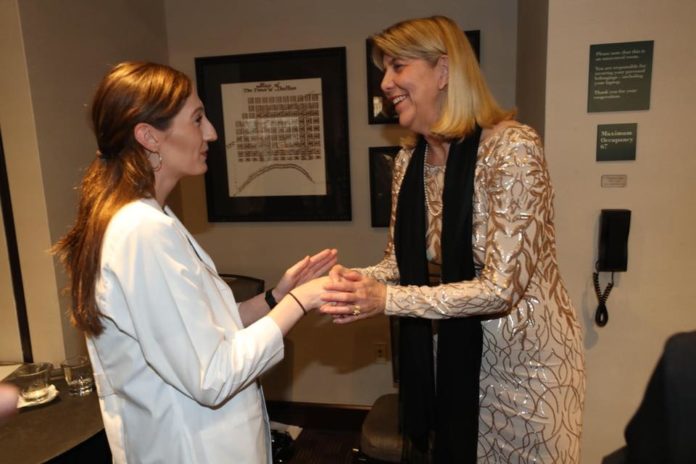
By Vivian Kwok | Reporter
Senior nursing majors will finish their clinical rotations Friday, March 23. Many of the nursing students feel prepared for the work force and to care for patients when they walk across the graduation stage in May because of the rigor and real-world settings of their rotations.
San Antonio senior Alex Torres said that before they begin clinical rotations, nursing students must complete their health assessment and learn crucial skills they will use during the rotations.
“Once we are checked off on those skills, we are cleared to perform them in the clinical setting with the supervision of our clinical instructor,” Torres said.
Dallas senior Amanda Jones said nursing students then rotate through two medical surgical clinicals, one psychiatric, one pediatric and one obstetric through their first three semesters at the Louise Herrington School of Nursing.
“Then your last semester you follow a nurse’s schedule for five weeks and work three [12-hour shifts] and assume care of the patient as the ‘nurse’ while being precepted,” Jones said. “And then for another five weeks you do your community health clinical rotations.”
Austin senior Victoria Zielinski said nursing students are responsible for many aspects of patient care like bathing them and changing their linens. They also take patients’ vital signs, administer medication and perform head to toe examinations among other duties.
“During clinical rotations the student gets to become a big, big part of caring for the patient,” Zielinski said. “For an example, if a patient has a wound, the student may be able to perform a dressing change on it.”
Zielinski also said clinical rotations are a vital component to nursing school and to a nursing student. She said they offer an environment where nursing students can now implement the skills on people that they have been practicing in their courses.
“They are honestly the best way to learn and see all of the skills and lessons being taught in the classroom in the real world. Without the experience of clinical rotations, I feel like I wouldn’t be as prepared for the real world after graduation,” Zielinksi said. “If we didn’t have clinicals, it would be the same as if doctors didn’t do rounds or their rotations and they show up on the first day completely lost.”
Jones and Torres both also agree that clinical rotations are an important part to their nursing training.
“Clinical makes all the studying worth it because in nursing school you are learning about things that truly pertain to your career,” Torres said.
Jones also said that having clinical rotations as a required part of their education helps them be confident as they enter into their jobs.
“Clinical is an amazing opportunity for students to get hands on experience with both nursing and communication skills,” Jones said. “Each day I go into the hospital setting I feel more and more comfortable and I think that will help me when I walk into the floor of my graduate nurse job for the first time.”
Jones, Torres and Zielinksi all said that clinical rotations also help them connect the work they do to the meaning of their work — caring for their patients.
“You are dealing with living people that are relying on you to know what you are doing,” Torres said.
Nursing students’ clinical rotations provide more than an extension of the classroom.
“Clinicals force you to grow up and grow up fast because you’re dealing with patient’s lives and families,” Zielinksi said.





